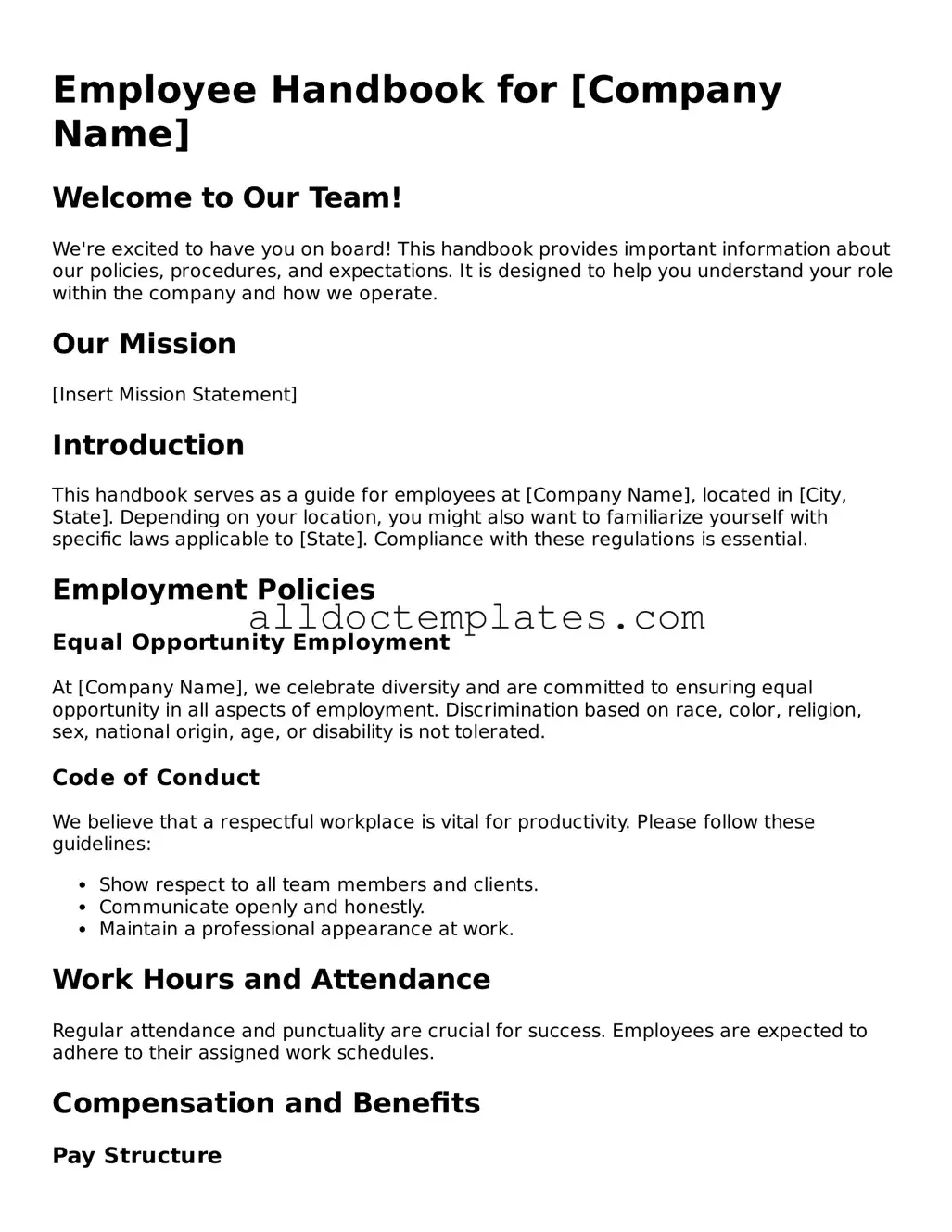Employee Handbook for [Company Name]
Welcome to Our Team!
We're excited to have you on board! This handbook provides important information about our policies, procedures, and expectations. It is designed to help you understand your role within the company and how we operate.
Our Mission
[Insert Mission Statement]
Introduction
This handbook serves as a guide for employees at [Company Name], located in [City, State]. Depending on your location, you might also want to familiarize yourself with specific laws applicable to [State]. Compliance with these regulations is essential.
Employment Policies
Equal Opportunity Employment
At [Company Name], we celebrate diversity and are committed to ensuring equal opportunity in all aspects of employment. Discrimination based on race, color, religion, sex, national origin, age, or disability is not tolerated.
Code of Conduct
We believe that a respectful workplace is vital for productivity. Please follow these guidelines:
- Show respect to all team members and clients.
- Communicate openly and honestly.
- Maintain a professional appearance at work.
Work Hours and Attendance
Regular attendance and punctuality are crucial for success. Employees are expected to adhere to their assigned work schedules.
Compensation and Benefits
Pay Structure
Payroll is processed bi-weekly. Paydays are on [insert payday schedule].
Benefits Overview
We offer the following benefits:
- Health insurance.
- Paid time off.
- Retirement plans.
Performance Reviews
Regular performance evaluations help ensure you are on the right track. Reviews will occur [insert review frequency].
Health and Safety
Your safety is our priority. Always report any unsafe conditions or incidents to your manager immediately.
Conclusion
We are thrilled to have you as part of [Company Name]! If you have questions about anything in this handbook, don't hesitate to ask your manager or HR.
Contact Information
If you need assistance, please reach out:
- Human Resources: [HR Contact Information]
- Office Phone: [Office Phone Number]
- Email: [Contact Email]
Acknowledgment
I, [Employee Name], acknowledge receipt of the Employee Handbook for [Company Name] and understand the policies outlined within.
Date: [Insert Date]
